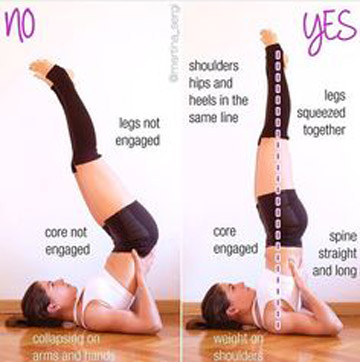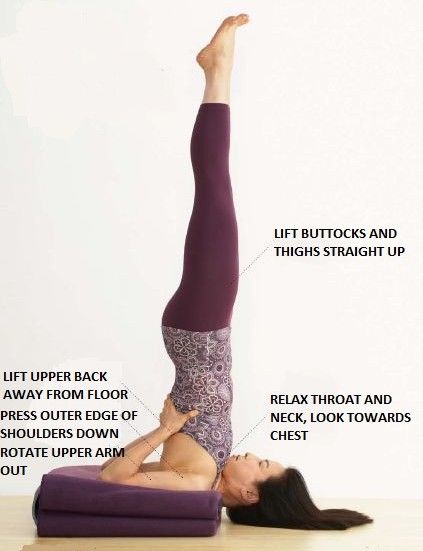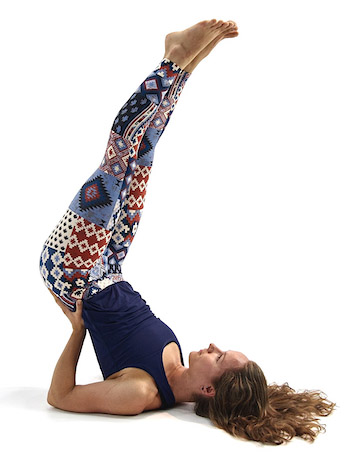I love the inversion called Shoulderstand (Salamba Sarvangasana), plus the benefits of practicing inversions are many. Shoulderstand is thought to promote good blood circulation, calm the nerves by stimulating the parasympathetic nervous system, decrease fatigue, and improve immune function. It also strengthens the spine and core muscles. However, it also puts a lot of pressure at the base of the neck (cervical spine), especially if performed incorrectly (“no” in picture 1). The body’s weight is pulled down by gravity, to rest on your cervical spine.

In Shoulderstand it is important the body aligns in a vertical line (“yes” in picture 1). I tell my students to image the entire back of their body up against a wall. The ankles, knees, hips and shoulder line up with one another. Your hands are supporting your back, with fingers facing inwards toward the spine. The shoulders blades are squeezing together and the back of the arms helps create a trapezoid base. The core and leg muscles are all engaged. Energetically your reaching your toes towards the ceiling.
If you still feel too much compression on the neck, use a folded blanket. A blanket adds space between the neck and the floor (pic 2), releasing pressure. One blanket is usually enough.

Other great options are Half- shoulderstand (pic 3) and a Modified-shoulderstand (pic 4), which uses a block. In Half-shoulderstand the torso is at an angle, alleviating pressure from the neck, while still working core muscles and getting the benefits of an inversion.


